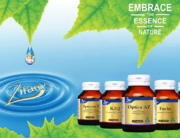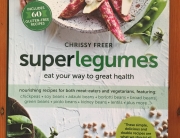 Until I was asked the question, I always assumed that fresh is best. After researching for this article I am still convinced of that, but I now look upon frozen vegetables in a whole new way. Lets look at the pros and cons of both fresh and frozen vegetables and see what comes to light.
Until I was asked the question, I always assumed that fresh is best. After researching for this article I am still convinced of that, but I now look upon frozen vegetables in a whole new way. Lets look at the pros and cons of both fresh and frozen vegetables and see what comes to light.
Fresh vegetables do taste better and have a nicer texture but they tend to lose water soluble vitamins such as vitamin C and B as they get older. According to Tara Diversi, a lecturer in the Human Nutrition Unit of the University of Sydney, spinach kept at room temperature (20°C) for two days loses half of its vitamin C.
Frozen vegetables are usually snap frozen immediately after they are picked with machinery getting the produce to -18°C in minutes. This ensures that their nutrients are kept stable until you cook them. Frozen veggies are uber convenient but tend to go soggy when you cook them.
A question also arises about how to cook vegetables to retain their nutritional value. How you cook your vegies may be more important than whether they are fresh or frozen. Boiling vegies in a large amount of water for a long time leaches the vitamins out of the veg and into the water. To limit nutrient loss use as little water as possible and steam them. The leftover water can then be used for making a stock so you don’t miss out on any vital nutrients. Microwaving certainly does destroy water soluble nutrients so be aware that you are losing nutrition when you go for convenience.
A word of warning, check your packet of frozen veg for added salt or sugar as you may be a little surprised at what you find. Another shocking piece of news – did you also know that as long as at least 50% of the product is grown in Australia, the packaging can read: Grown in Australia. This is due to an Australian consumer law, which was introduced in 2011. I was horrified at this and think most people would be genuinely astounded. You don’t immediately think about ratios of ingredients when you read “Grown in Australia”, you just automatically assume that the product is 100% Australian. Not always so….
There has been an explosion in vegetable imports as the big food chains, Coles and Woolworths take advantage of the high Australian dollar to buy cheaper products. A record $651 million of vegetable products were imported between November 2010 and November 2011. More than a third ($231m) were frozen vegetables and they were mainly grown and processed in New Zealand and China.
Let Me Spill the Beans on Brands!
McCain – their spinach is from Holland & broccoli from China
Logan farm – GMO free but grown in NZ
Birds Eye – thumbs up for the only brand that is still 100% Australian! Birds Eye is the only frozen vegetable processor left in Australia, all other companies either buy their vegetables from overseas or process them overseas!
The ideal situations is to grow your own veggies as when picked fresh, they have the highest nutritional value. There are generally less chemicals than in conventional farming and the carbon footprint is almost zero. I grow kale, rocket and parsley for my green smoothies and I live in an inner city apartment. Even if you only have a windowsill you can grow some parsley!
My conclusion is that fresh is certainly best and frozen could be a good back up at the end of the week if you run out of fresh ingredients. If you live in more remote areas and don’t have easy access to fresh ingredients, frozen vegetables are a great way to ensure you are still getting your nutrients in. At the moment I have frozen spinach that I use for emergency dinners but apart from that I rely on my weekly organic box from Lettuce Deliver.
Let me know what you think by commenting here – do you use frozen veg?




















































































































































